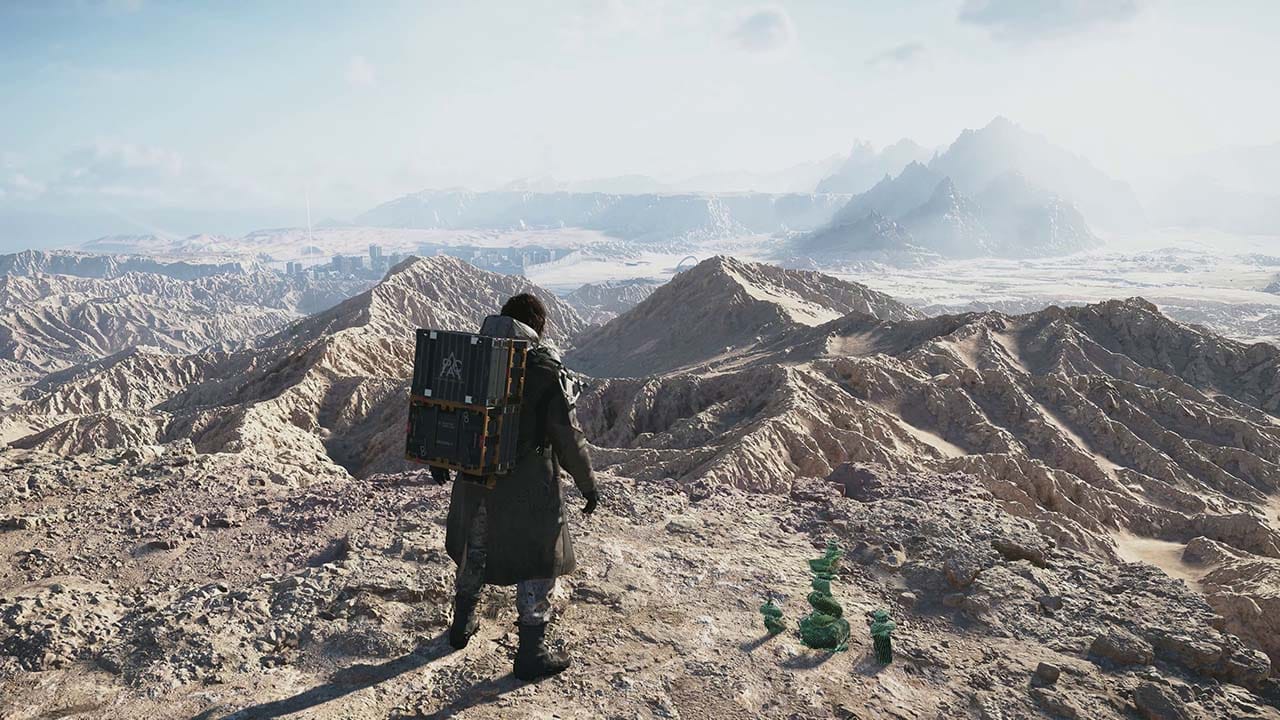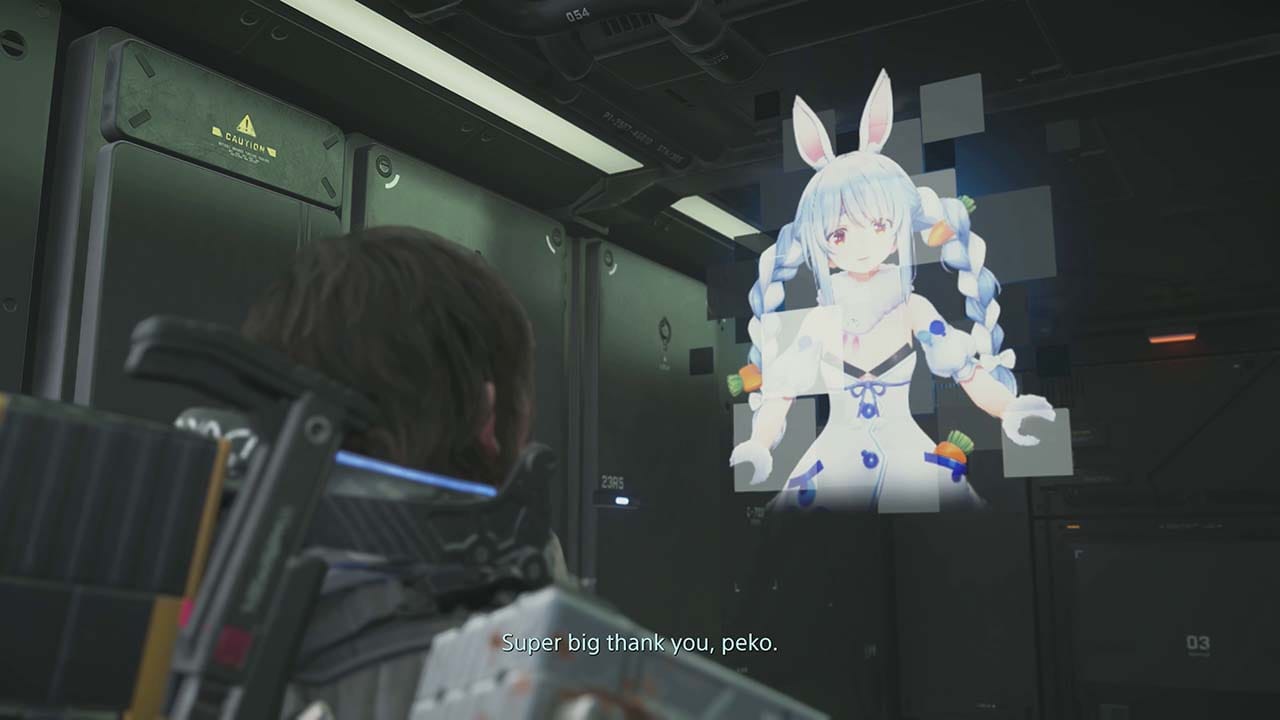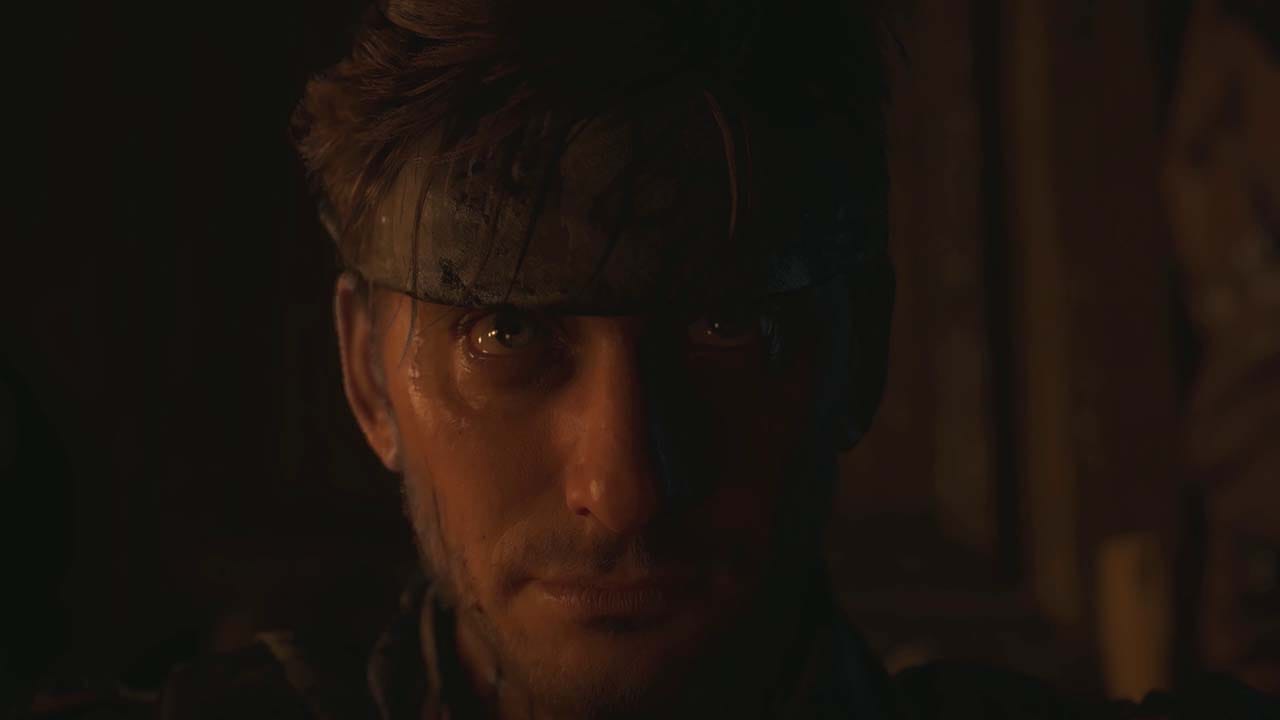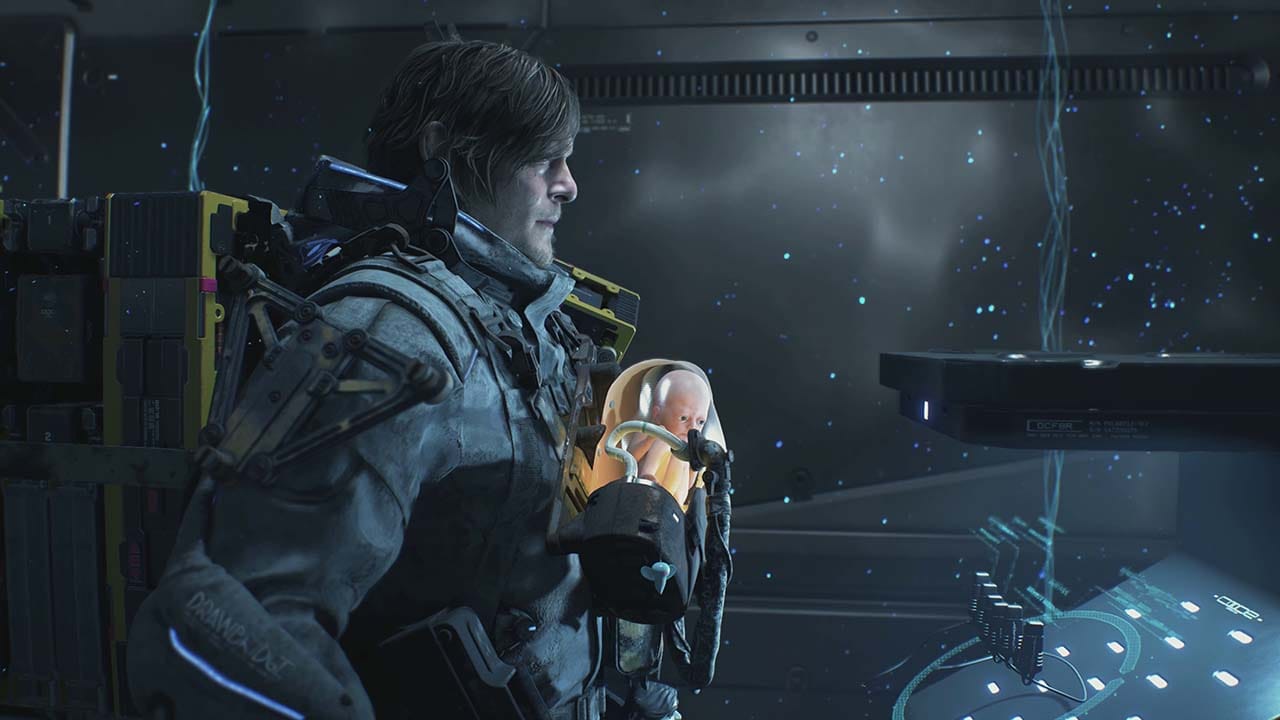Death Stranding 2: On The Beach Review
Death Stranding 2 is unlike anything else you’ve ever played, and you may never know if that’s a good or bad thing unless you play it.
I’m one of those people that loves a good B tier horror movie. Hell, I’ll watch letters of horror movies much further into the alphabet than that, because ultimately the entertainment value is not coming from the attempted horror – it’s coming from being so bad it’s good. Horrible dialogue, just abysmal acting by someone who’s last job was dreaming about being an actor, and a plot so full of holes someone built enough character digging them to last three lifetimes. The secret to these things still being successful is that there is an expectation that that’s what you’re in for. You’re not going in thinking that you’ll be having nightmares about the fourteenth little girl crab walking up a wall – you’re going in thinking that you’re going to likely be laughing more than you do watching actual comedy. If you go in thinking anything else, you’re just going to be lamenting the whole thing and the price of the popcorn you emptied your bank account for on the way in.
In a similar way, albeit not to equate them to B movies so directly, Hideo Kojima games need similar expectations set before you dive in. This was true 25 years ago and it’s arguably truer now that he’s been let loose on the world with no guard rails. Because for better or worse, Death Stranding 2 is Kojima unchained – a complete and utter distillation of all that is Kojima in a singular title, unfettered by thoughts of restraint, or corporate Konami oversight. All gas, no brakes. If you understand what that even means you’ll hopefully be able to get an idea as to whether or not this game will resonate with you. If you can’t quite sort out what I’m getting at, you’re experiencing one of the principal issues Death Stranding 2 has as a game.
Death Stranding laid some pretty wild groundwork for whatever would come after it – assuming it ever sold enough to let Kojima suit up for round two – which of course it did…eventually. While the original was nominated for Game of the Year by some publications the initial reception from the critics and players alike weren’t so clear cut. It was a divisive game not just for its gameplay but for its writing as well. It was, and still is, a unique experience in many ways, and it took a good long while for enough people to warm up to it that by the time the PC release landed it had farmed enough positive word of mouth that it broke out of the obscure and gave Kojima the green light to really lean into it the next time up to bat.
And lean into it he did.

We pick up with Sam some time after the end of the first game, Lu on board, and tasked with getting back to home base from atop a mountain range. It’s not long before you’ll realize that Death Stranding 2 is likely to be the best looking game on the PS5 for quite some time. The Decima engine is an absolute animal and Kojima’s team have done such a ridiculously good job with it that it makes the value proposition of the PS5 Pro that much worse. I played in performance mode on a base PS5 for the higher framerate which was very much stable in the vast majority of situations – only buckling slightly under extreme conditions.
What’s more, most people would likely need to have the differences pointed out to them between Performance mode and Quality mode – something that’s entirely uncommon in a game like this where so much world is exposed to you at a great distance all the time. The Decima engine really is a piece of work, and the colour accuracy, lighting quality, atmospherics, and level of detail is outright ridiculous. You may be spending a lot of time on foot or trudging along in a slow moving vehicle, but you probably won’t care because the journey is gorgeous. I frequently stopped what I was doing just to take it all in and I still can’t believe it was on a console in performance mode – it’s like they’re cheating.
That said, you are doing a lot of walking or riding around because ultimately that’s what Sam’s role to play is in this grand scheme. Where you spent your time hooking up what once was the US of A in the first game, Death Stranding 2 has you bringing Mexico, and more specifically Australia onto the network. Sam’s playing the grizzled retired guy who just got out of the game, but Fragile shows up with a fancy ship and a cigarette in hand and Sam caves like a cheap lawn chair. While you could watch nearly 95% of every piece of footage the game could offer and not be spoiled for the obscenely obtuse nature of Kojima’s delivery, there are narrative bits here I’m avoiding for your sake.
That Ricky Martin ass upside, inside out, livin’ the vida loca fucking word salad, jumbled, twisted, M. Night Shyamalan on ketamine narrative delivery and tonal rollercoaster is exactly where that aforementioned needed expectation comes in. While Death Stranding was partly divisive for its writing, it was far better at managing its tone in relation to its messaging and leagues more focused. Death Stranding 2 by contrast will completely capture you with gripping atmosphere, haunting music, an emotional albeit often contextless cutscene, and then dump you directly into delivering your bodyweight in pizza to Pekora because Kojima caught a live stream of hers one day and decided she just had to be part of the main quest.

Listen – some of my favourite things in games are the silly things, even when the game itself is quite serious. I do, however, think that where those things are placed and how the player finds them and consumes them is still important to some degree. Death Stranding 2 is loaded with this kind of stuff, and that’s a good thing because it let’s Kojima just throw in all that he loves with the shackles of Konami no longer binding him. I just wish that it wasn’t at the expensive of the meat of Death Stranding 2’s story because there is a lot of good shit in here thematically and otherwise despite the pacing being horrific and dialogue that’s frequently what I could only describe as the written form of the uncanny valley. I’m already fighting for my life taking every literally-as-possible named character seriously – I don’t need the extra hurdles. Credit where it’s due, the voice acting and mocap work is stellar in spite of it all which is probably not that surprising when you look at the cast on tap.
Side note – but do you think that Kojima wrestled with the idea of paying Sony to use the name Walkman at some point?
What really drove me a bit crazy was that these whacky bits took precedent over bread crumbing the plot and character development more evenly. Instead, you’re more or less served up a series of character vignettes that do an enormous amount of heavy lifting given further development barely exists. The result instead is absolutely minimal narrative or character movement for eighty percent of the game, and then in true Kojima style, everything is shot out of a cannon at you all at once in a handful of feature length film cutscenes. I guess it’s ok, though, because it gives you an intermission and breaks the fourth wall a couple of times to let you know that it’s about to do it, so…yeah. Oh, and of course Kojima takes several opportunities to use one character to really get his digs in on Konami regarding Metal Gear Solid because…well because he can – and that’s sort of I think the explanation for a lot of this stuff in general. Whether that’s good or bad is really going to be up to you and your expectations.

Speaking of Metal Gear Solid, oh boy did we ever get closer to Death Stranding just becoming that. Combat was pretty rough in the first game, and every effort was made to try and make that a less painful experience this time around which is good because there feels like a lot more combat is put in front of you this time around. It’s not perfect, but it is significantly better and credit should be given for the variety of weapons and combat options at your disposal. It’s still insanely clunky to switch between weapons and grenades, and Sam has this odd habit of wanting to put the gun away and then take it back out when you’re going in and out of aiming down sights, but other than that combat is good enough that you can make what you want of it with your own play style. Boss fights are unfortunately repetitive and… one note in more ways than one. There are a couple of fights toward the end that are just outright bad, but I suspect the focus was more on the cinema than the gameplay at that point.
I do want to bring attention to how great the various systems in the game all work together, though. There is deceptively a lot going on at all times, and despite how complex the various systems are for something even as simple as moving cargo it all works like magic. Being able to take a bunch of cargo out of storage, put it on the ground because it’s too heavy for Sam, go to the garage to take out a vehicle, and then load up that vehicle with said cargo all in one menu in moments is really impressive to me. Just as impressive and still unique in its implementations are the myriad social mechanics you can participate in and take advantage of during your time with the game. Like before you will see bridges, ladders, ropes, roadways, mailboxes, cargo drops, and more all from real players who you have connected with through the Chiral Network as you play. So much of this is just running in the background that it’s easy to forget it’s even there but you’re still interacting with it constantly and that’s the mark of some truly great implementation.

While Kojima sidestepped calling anyone Walkman, he still put his to good use. Like the first game, Death Stranding 2 has a host of specially selected tracks by a number of groups that Kojima took a liking to and for good reason because most of it is a perfect fit for a jaunt down the shear cliff face of a mountain while carrying an irreplaceable MacGuffin. The custom work is well done, too, and some of the end game pushes are made infinitely more impactful thanks to the music. The music does fall victim to some of that tonal whiplash on occasion, though, but you’ll either grow numb to it or learn to love it either way I suppose. It’s easy to overlook, but I think the sound design is just as good. There are innumerable instances in which minor details are paid attention to in the soundscape, and it’s absolutely an additive component that I appreciated on more than one occasion.
To quote every dad to have ever walked the Earth, I’m not mad, I’m just disappointed. Even knowing Kojima’s bent going into Death Stranding 2 I was left severely frustrated by the flippant way in which it undercuts its own narrative delivery and tone – especially in the end game. This is a great game, and its gameplay loop like this first game’s will likely surprise you with how easy it is to vibe to and enjoy. Ultimately your enjoyment is likely going to come down to your expectations. Go in knowing that this is Kojima distilled into video game form in the most literal sense you can imagine. If you can even wrap your head around what that entails you may be able to look past the things that other creators would be crucified for if they were crazy enough – or genius enough – to attempt them. Death Stranding 2 is unlike anything else you’ve ever played, and you may never know if that’s a good or bad thing unless you play it.

